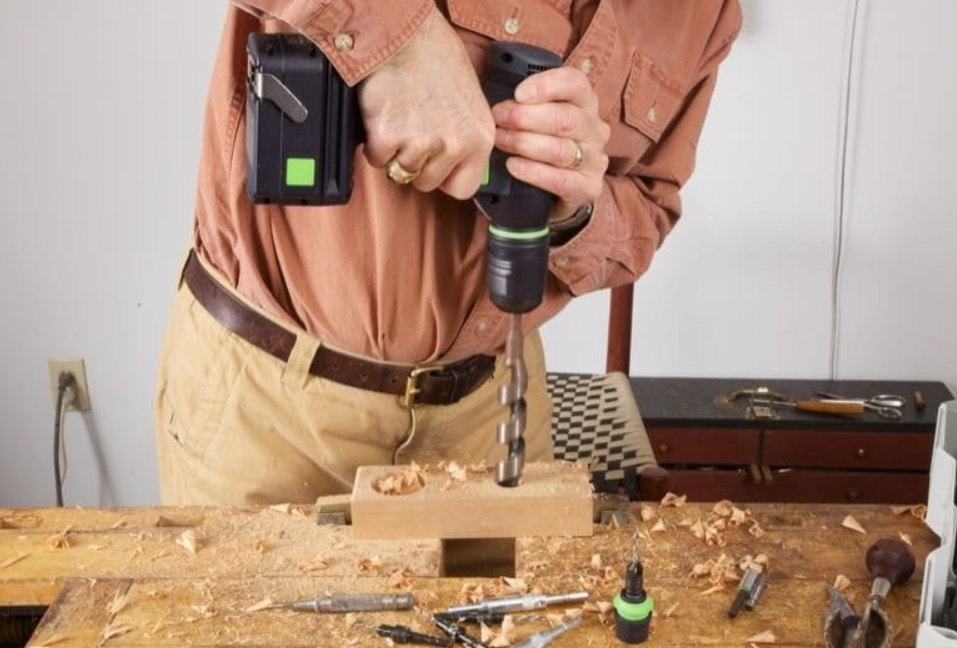Within the realm of DIY enthusiasts and skilled craftsmen, having the appropriate tool can truly be a game-changer. Among the extensive array of available tools, there’s a hidden gem that’s often underestimated: the step drill bit. If this tool is new to you or you’ve only had limited experience with it, get ready for an enlightening discovery.
Step bits, also recognized as step drill bits or unibits, stand out as versatile and indispensable instruments for boring holes in diverse materials, establishing themselves as an essential addition for those aiming to elevate their crafting expertise.
Step bits are unique in their design and functionality. Unlike traditional drill bits, which have a single cutting edge, step bits have multiple stepped levels or increments, each with a different diameter. These increments are typically etched with size markings, making it easy to select the desired hole size for your project. Most step bits come with two or three steps, but you can also find variants with more steps for added versatility.
The construction of step bits allows them to drill holes of various sizes without the need to change bits constantly. This feature makes them particularly handy for tasks like installing electrical boxes, creating holes for pipes and tubing, or even deburring edges. Their ability to enlarge holes gradually makes them a top choice for working with thin materials like sheet metal, plastic, or wood.
Step bits excel in a wide range of applications, making them a versatile addition to any toolbox. Here are some common uses:
Step bits are ideal for drilling holes in metal sheets, pipes, and tubing. Their ability to create clean and precise holes without tearing or distorting the material is a game-changer for metalworkers.
2. Electrical Work:
When you need to create holes for electrical conduit or boxes, step bits are your best friend. They provide a smooth, burr-free hole that ensures a snug fit for conduits and wiring.
3. Plumbing:
Whether you’re working with copper, PVC, or steel pipes, step bits make quick work of creating holes for plumbing connections. The stepped design allows for a range of pipe sizes to be accommodated.
4. Woodworking:
Although step bits are primarily associated with metalworking, they can also be used in woodworking. They’re perfect for creating countersink holes for screws or drilling holes for dowels and other fasteners.
5. Automotive Repairs:
Step bits are invaluable when it comes to modifying or customizing your vehicle. Whether you’re installing new lights, antennas, or other accessories, these bits can drill clean and precise holes in your vehicle’s bodywork.
Now that you’re familiar with the versatility of step bits, it’s time to learn how to use them effectively like a pro.
1. Secure Your Workpiece:
Always ensure that the material you’re drilling is firmly clamped or secured. This prevents slipping and enhances precision.
2. Start Slow:
Begin drilling at a slow speed to create a small pilot hole. Once the pilot hole is established, you can increase the speed gradually to enlarge it to the desired size.
3. Use Lubrication:
For metal drilling, using a lubricant or cutting oil can improve performance and extend the life of your step bit. Lubrication helps reduce heat buildup and friction, resulting in smoother drilling.
4. Mark Your Depth:
To avoid over-drilling, mark the desired hole depth on the bit or use a depth stop collar on your drill.
5. Safety First:
Always wear appropriate safety gear, including safety glasses and hearing protection, when operating power tools.
6. Maintain Sharpness:
Periodically inspect and sharpen your step bits to ensure they remain effective. A dull bit can lead to rough holes and increased effort.
7. Practice on Scrap Material:
If you’re new to using step bits, practice on a scrap piece of the same material before working on your actual project.
8. Control Speed and Pressure:
Maintain a consistent drilling speed and apply even pressure to the bit. This helps prevent overheating and ensures a clean hole.
To optimize the effectiveness of your step bit, it’s essential to choose the right one for your particular project. Consider the following factors:
1. Material:
Different step bits are designed for specific materials. Ensure you select a bit suitable for the material you’ll be working with.
2. Size Range:
Determine the range of hole sizes you need for your project. Choose a step bit that offers the necessary increments.
3. Quality:
Invest in high-quality step bits made from durable materials. While they may be pricier, they’ll last longer and provide better results.
In conclusion, step bits are a hidden treasure in the world of tools, offering versatility and precision that can take your crafting and DIY projects to the next level. By understanding their features and applications and mastering the techniques, you can use step bits like a pro. Whether you’re a seasoned craftsman or a novice DIY enthusiast, adding a step bit to your toolkit will open up a world of possibilities and make your projects more efficient and enjoyable. So, the next time you’re in your workshop, remember that drill bit nirvana awaits with the incredible versatility of step bits.

